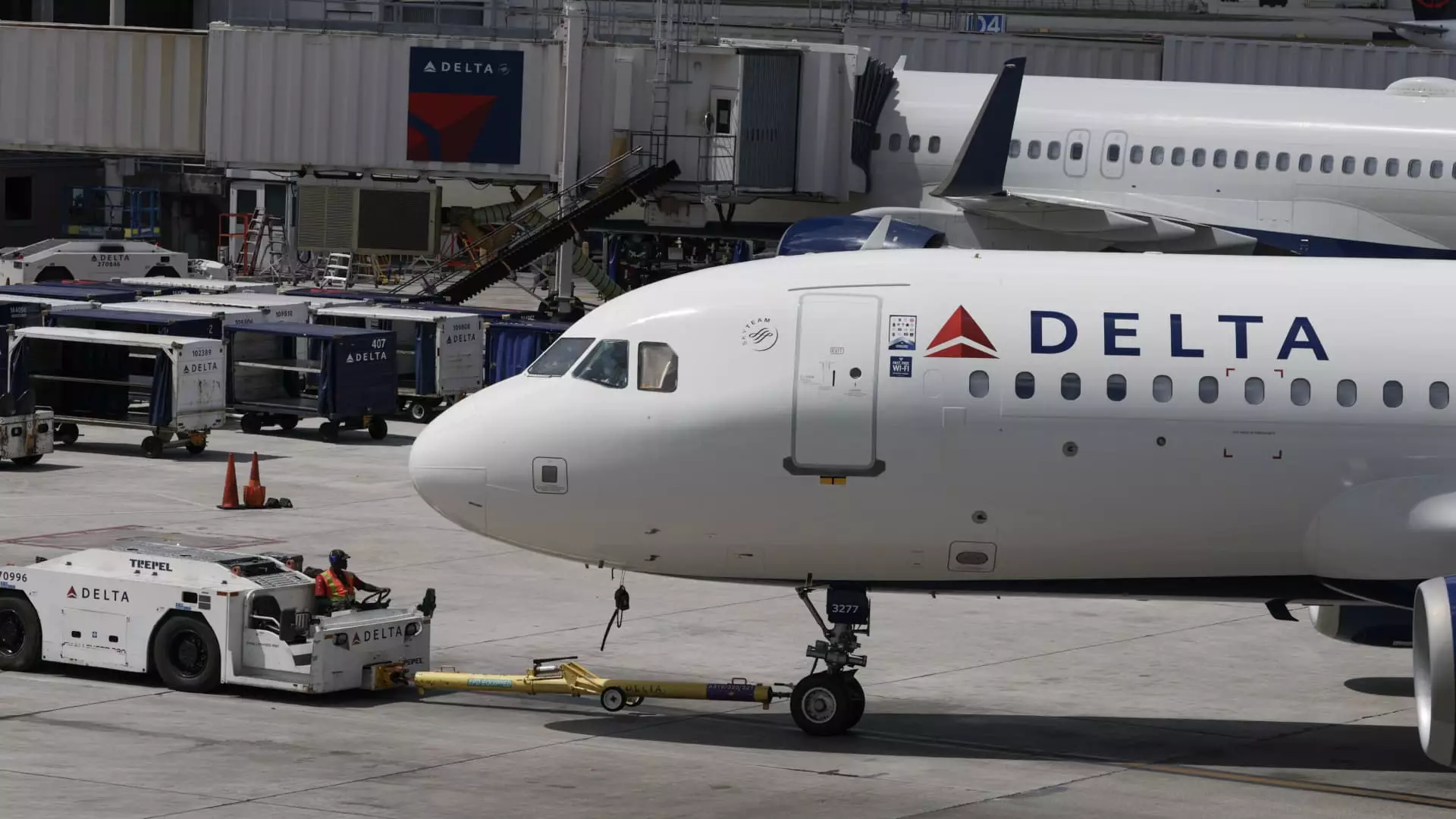The recent rally of the S&P 500 to historic heights appears, on the surface, to signal an unstoppable economic rebound. The benchmark index has skyrocketed over 25% since its April lows—a recovery so swift that it challenges the most optimistic forecasts of post-crisis revival. Yet, this impressive climb conceals troubling disparities: not all stocks have benefited equally. Many remain well below their pre-pandemic peaks, revealing a market that is far from uniform in its recovery. Such divergence is often a warning sign that whole sectors may be overvalued, fueled by investor optimism rather than genuine economic strength.
For instance, major airline stocks like Delta are still stuck more than 25% beneath their February highs. This disconnect prompts a vital question—are these seemingly undervalued firms actually bargains, or are they undervalued for good reasons? The general perception might be that their lower valuation offers a buying opportunity, but the reality suggests a more complex narrative. Airlines could be caught in a classic cycle of overexpansion, where capacity growth outruns actual demand, squeezing profit margins and making the recovery more fragile than it looks. The market’s exuberance might overlook these underlying vulnerabilities, risking a correction when the reality settles in.
Economic Indicators or Illusions of Strength?
Despite the euphoria, key economic fundamentals tell a different story. The airline industry’s capacity expansion continues at a pace that may overshoot market demand, hinting at an anticipated price war that could erode profits further. Notably, US carriers are aggressively increasing domestic flights, which may dilute premium pricing and strain operational efficiency. Though fuel prices have recently dropped—anticipated to reduce costs by over 1%—this benefit might be offset by growing labor expenses, which are expected to jump by approximately 7% annually. Rising wages threaten to neutralize the gains from lower fuel costs, particularly as non-fuel operating costs rise, squeezing margins.
This scenario raises questions about the sustainability of the rally’s underlying assumptions. The market’s current optimism factors in some improvement, but it potentially underestimates the prolonged financial strain on airlines and other sectors still in flux. The idea that the recovery is a broad-based, organic improvement rather than a liquidity-fueled surge remains highly questionable.
The Perils of Overreliance on Market Momentum
The options market signals expected volatility, with implied moves of over 7% around next week’s earnings reports and potential swings exceeding 12% over the coming weeks. Such indicators suggest that investors are acutely aware of underlying risks and are positioning for significant price swings. The deployment of complex trading strategies, such as calendar spreads, underscores the market’s tentative stance—betting on a modest rise while hedging against potential downside surprises.
But these strategies are double-edged swords. They rely on relatively stable volatility and predictable market behavior, which history shows often diverges sharply during periods of underlying fragility. The tendency to chase momentum at record highs, while dismissing underlying sector-specific and macroeconomic risks, could lead to a brutal correction if momentum stalls or reverses. Especially when much of the rally appears to be based on overconfidence and speculative positioning rather than concrete fundamentals.
Questioning the Legitimacy of the Rally
Behind the allure of record highs lies a sobering truth: markets are increasingly disconnected from reality. While some sectors and companies may indeed be bouncing back, many are merely riding the wave of investor sentiment and central bank support. The current rally resembles a house of cards—built on the assumption that a few economic indicators and falling fuel costs can sustain a broad recovery. However, structural challenges like inflationary pressures, labor cost increases, and oversupply in certain sectors threaten to undermine this fragile optimism.
History warns us that markets driven primarily by liquidity and speculative euphoria often end badly. The recent performance of certain stocks, which have yet to regain their previous highs, indicates that the underlying economic health remains inconsistent. This disparity suggests that investors may be misjudging the true risk landscape, overestimating the durability of the current upswing.
While the market’s meteoric rise might seem like a sign of unwavering resilience, it is equally a reflection of investor overconfidence, sector-specific vulnerabilities, and structural imbalances. The illusion of a broad, sustainable recovery is just that—an illusion. Foolish optimism in the face of underlying fragilities could prove costly as reality recalibrates these lofty valuations downward. In such a climate, cautious skepticism is not only prudent—it is necessary.

